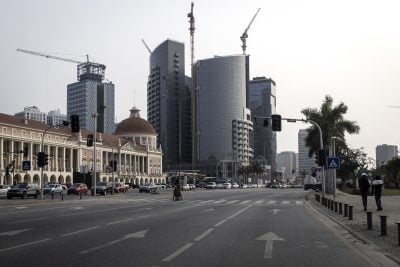Most Zambian copper is very high grade, yielding 2-3% in comparison with the global average of 0.8%. The country is now the sixth biggest producer in the world, accounting for about 4.5% of global output and is widely expected to move into the top five over the next few years.
The government has set a copper production target of 1.5m tonnes a year tonnes by 2015, which would require output to almost double. Current production estimates vary from source to source. The IMF estimates Zambian production at 916,000 tonnes for the first 11 months of 2013, but several mining industry analysts put the figure substantially lower. One mining sector consultancy, CRU Group, estimated DR Congolese production for 2013 at 846,000 tonnes and put Zambian output 2% lower for the year.
Both the DR Congo and Zambia reserves are part of the same geological system and CRU estimates that both have the potential to double their production capacity over the next decade. A copper consultant at the firm, Piotr Ortonowski, says: “This is potential production from projects and it is highly unlikely that it will all come on stream: realistically only 50% to 60% of it will. It will be the nations’ ability to provide a favourable investment environment to mine project developers that will determine which will be the most successful.”
The country’s various copper mining projects are listed in Table 1 but the biggest addition to production is expected to come from First Quantum Minerals’ Trident project in Northwestern Province. The environmental impact assessment on the scheme has now been approved, with production of 150,000 tonnes a year expected in phase one, increasing eventually to 300,000 tonnes a year. Commercial production is expected to begin later this year and total development costs on the venture will be about $1.7bn.
Apart from copper, Zambia produces cobalt, coal, gold, lead, silver and zinc; and also accounts for 19% of global emerald production. There is limited investment in uranium exploration and the country has produced uranium on a commercial basis in the past.
Coal production stood at just 281,000 tonnes in 2012 but there is plenty of scope for growth here too. Most current coal production comes from the Maamba mine, which has proven reserves of just 20m tonnes and which is mainly owned by Nava Bharat of Singapore.
Production on the mine is expected to be ramped up from 360,000 tonnes a year at present to 2m tonnes a year by 2018, with much of this used to supply new local thermal power plants. Other projects are also being developed at Maamba and Collum, in the same area.
Given rising production in other coal producers in Southern Africa and the growing demands being placed on the region’s rail and port capacity, it seems unlikely that Zambia will become a significant coal exporter in the near future.
Power sector strains
Increased copper production will be good for economic growth but will also place greater pressure on ancillary infrastructure. Zambia’s Copperbelt Energy predicts that power demand from mining sector consumers will increase from 900 MW at present to 1,550 MW in five years’ time.
Mines Minister Christopher Yaluma announced in February that national generating capacity would increase by 780 MW or 39% over this period, mainly in order to serve the mining industry. Almost all of this will be provided by the 750 MW Kafue Gorge Lower Hydro Project, which is being developed by China’s Sino Hydro and Zambia’s Zesco, and which is scheduled to come on stream in 2018. Most of this new capacity will be needed to supply Northwestern Province.
A larger proportion of new production is being developed in Northwestern, rather than in neighbouring Copperbelt Province, which as its name suggests has been the heart of the Zambian copper industry for many years.
The corporate development managing director of Copperbelt Energy, Michael Tarney, says: “Demand is being driven by new investments in copper mining and smelting. They are all expanding and this means we have to find more power.” Apart from First Quantum Minerals, Glencore Xstrata is also developing mines in Northwestern Province.
Outlook
There have been reports that mining sector taxes have already been increased but as Table 2 indicates, an analysis of most taxes and royalties reveals that they were the same in 2010, 2011 and 2012. There were, however, increases in the level of royalties on base metals, precious metals and gemstones. Mining sector taxation is regarded separately from general corporate taxation and is set each year as part of the annual budget.
Also speaking at Mining Indaba, EY
Africa advisory services mining and metals leader Mike Roy said: “While Zambia has large quantities of copper resources, it is also relatively stable politically and in terms of its legislative framework. Recent initiatives by the Zambian government seem to indicate a willingness to create an environment of predictability and transparency going forward. This potentially provides investors with a great deal of certainty.”
Want to continue reading? Subscribe today.
You've read all your free articles for this month! Subscribe now to enjoy full access to our content.
Digital Monthly
£8.00 / month
Receive full unlimited access to our articles, opinions, podcasts and more.
Digital Yearly
£70.00 / year
Our best value offer - save £26 and gain access to all of our digital content for an entire year!
 Sign in with Google
Sign in with Google 


